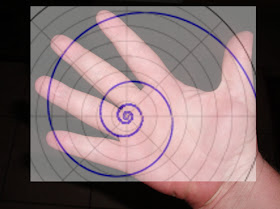For twelve points on the circle you can move 5 steps around each time and visit every point once and end up back where you started. This is because if the points are labeled 1 through 12:
(5*n+1) mod 12: n=0..12 = [1,6,11,4,9,2,7,12,5,10,3,8,1]
For 14 points 5 works as well:
(5*n+1) mod 14: n=0..14 = [1,6,11,2,7,12,3,8,13,4,9,14,5,10,1]
For 16 points:
(5*n+1) mod 16: n=0..16 = [1,6,11,16,5,10,15,4,9,14,3,8,13,2,7,12,1]
20:
(5*n+1) mod 20: n=0..20 = [1,6,11,16,1x
So maybe it always happens when they don't share a factor:
For 14:
(3*n+1) mod 14: n=0..14 = [1,4,7,10,13,2,5,8,11,14,3,6,9,12,1]
but (6*n+1) mod 14: n=0..14=[1,7,13,5,11,3,9,1x
So my conjecture is this type of drawing can be made when:
(s*n+1) mod C: n= 0..C = [every possible remainder once then repeat]
for s and C coprime.





























